Estimated reading time: 7 minutes
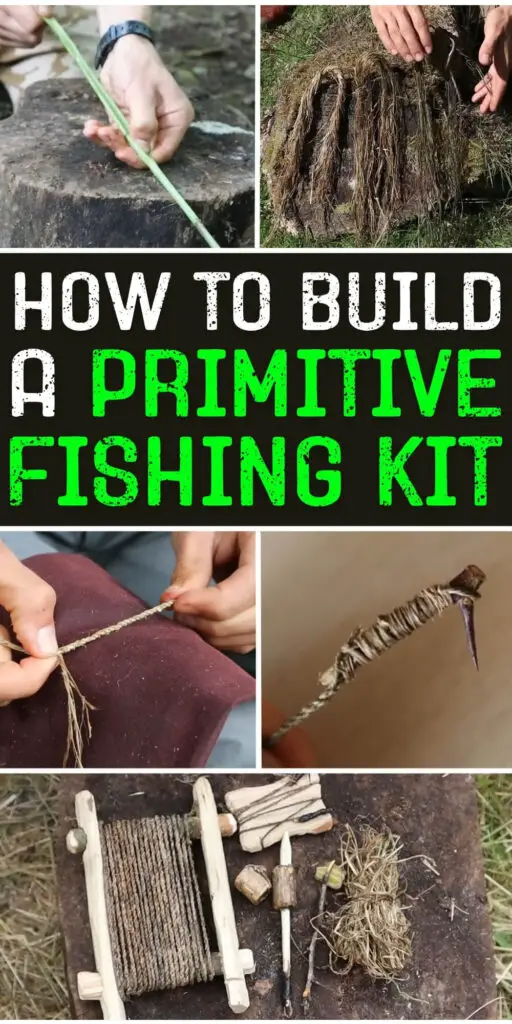
If you're interested in bushcraft or wilderness survival, one of the first skills you should learn about is primitive fishing. I recently came across an incredible video by Tom from the Youtube channel, Fandabi Dozi.
In the video, he crafts an entire pocket-sized fishing kit using nothing but natural materials from the wilderness. This kit is practical, resourceful, and deeply connected to traditional bushcraft and survival skills.
You can watch the video below to learn how to make it, but I typed up the steps for those who prefer to read.
Step 1: Make Nettle Cordage (Your Fishing Line)
Start with stinging nettles (Urtica dioica). They’re not just nutritious, they’re also incredibly strong when processed correctly.
Cut mature nettles close to the base (mid to late summer is ideal).
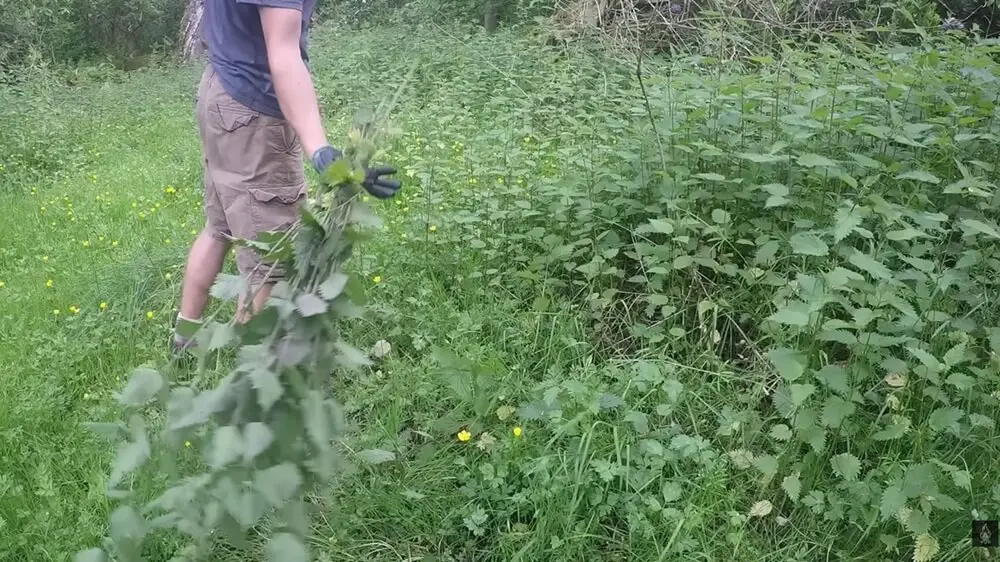
Strip the leaves by running your hands down the stalk in both directions.
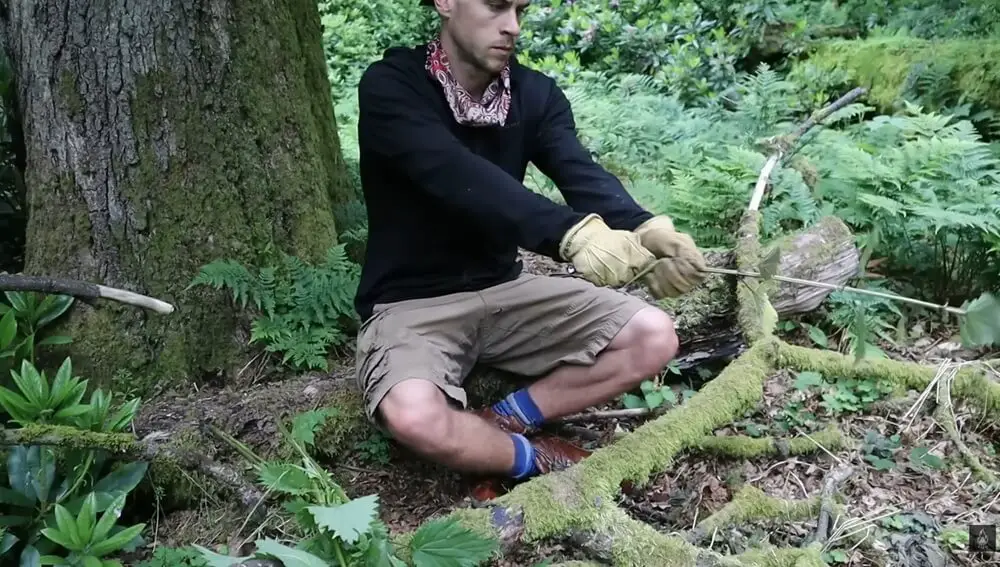
Pound the stems gently with a stick or the butt of your knife to break them open.
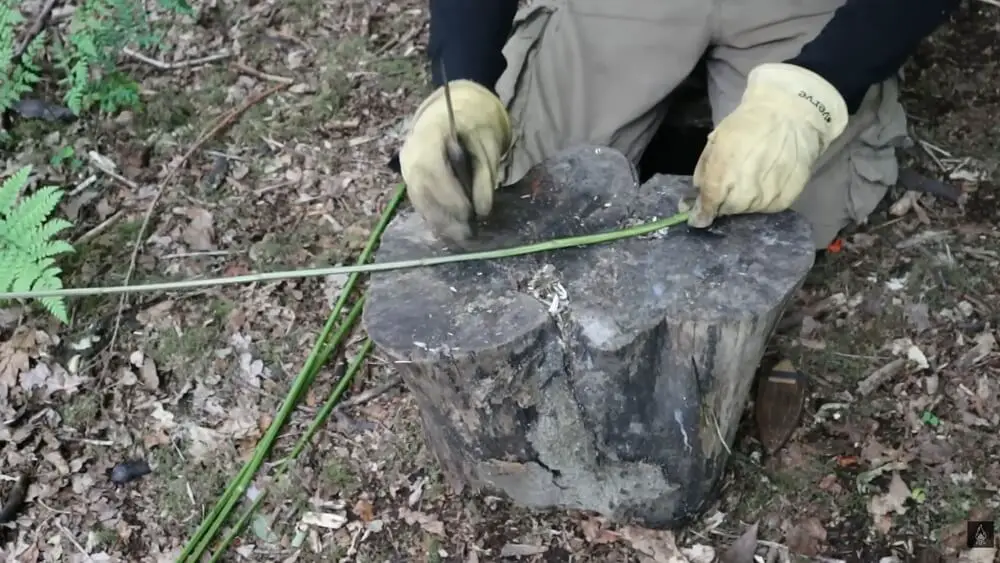
Split them lengthwise and use your fingers to separate the inner fibers from the outer casing.

Dry the fibers for several days.
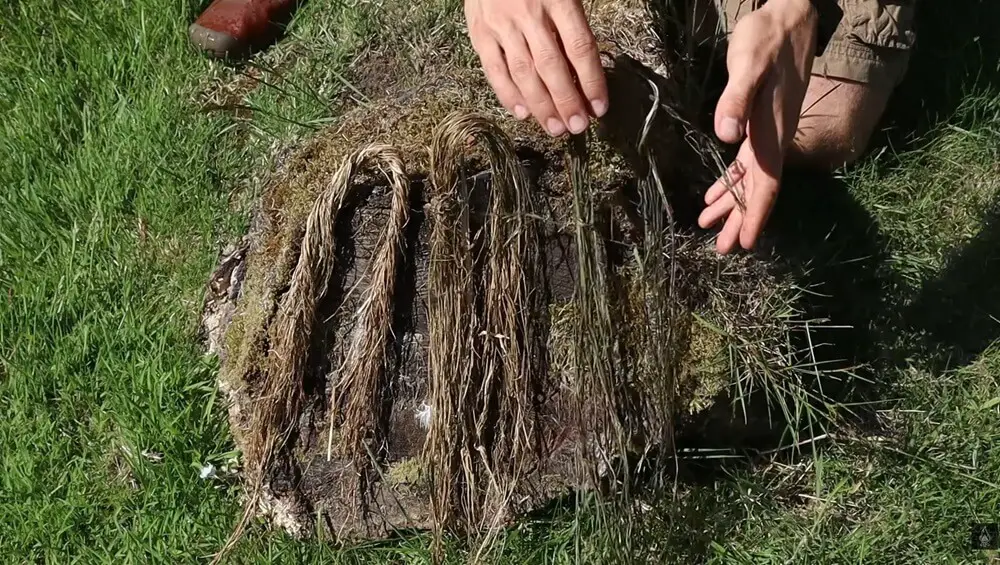
Grab a small bundle of dry fibers, twist until a kink forms, then use the “reverse wrap” method:
- Twist each bundle away from you, then twist the two together toward you.
- Keep adding fibers as you go for longer cordage.
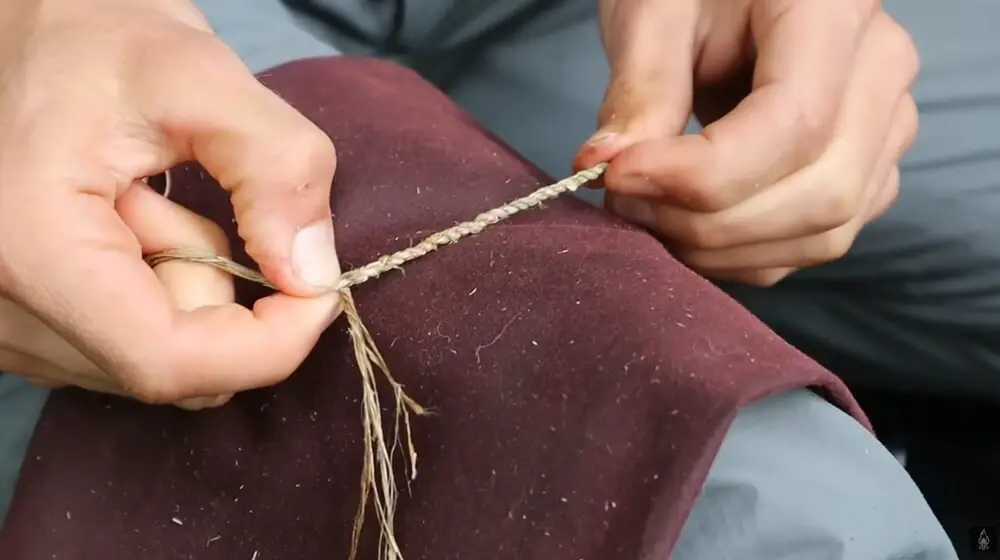
Tie an overhand knot, burn off loose bits with an open flame (carefully), and coat the line with beeswax for durability and waterproofing.
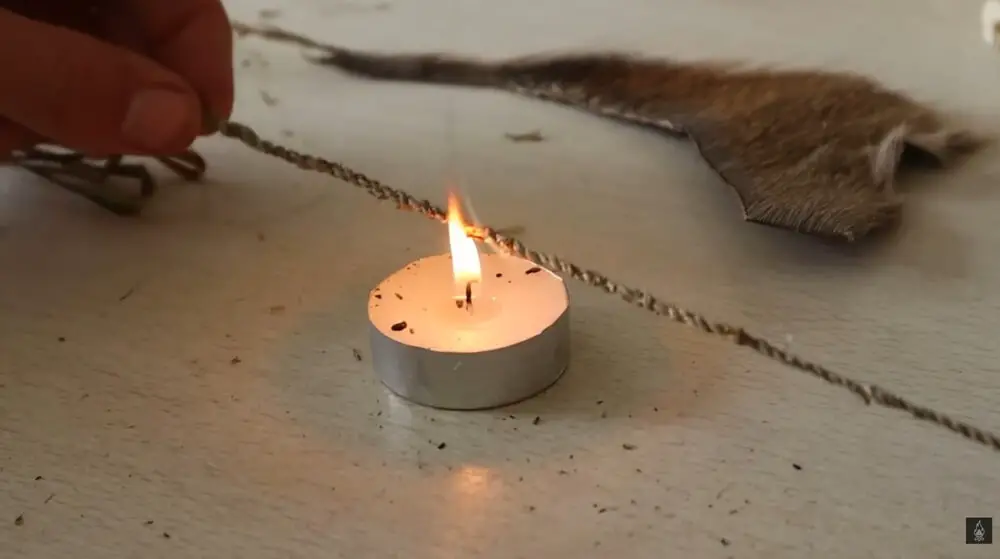
Step 2: Craft Primitive Hooks from Hawthorn Thorns
The hawthorn tree (Crataegus) has long, hard thorns that make perfect primitive fishhooks.
Carefully select and trim the thorns.
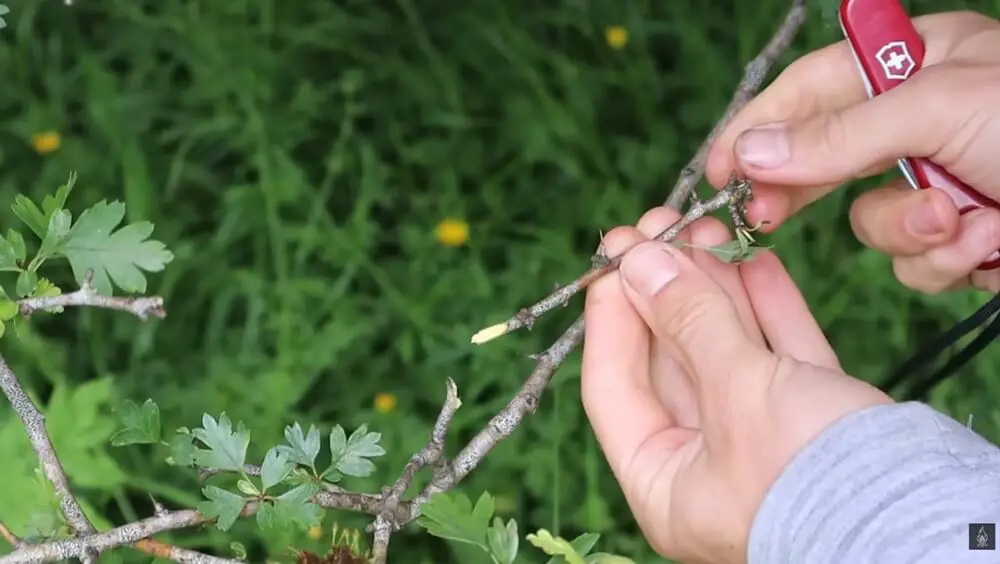
Lash them to the end of your nettle leader using fine fibers.
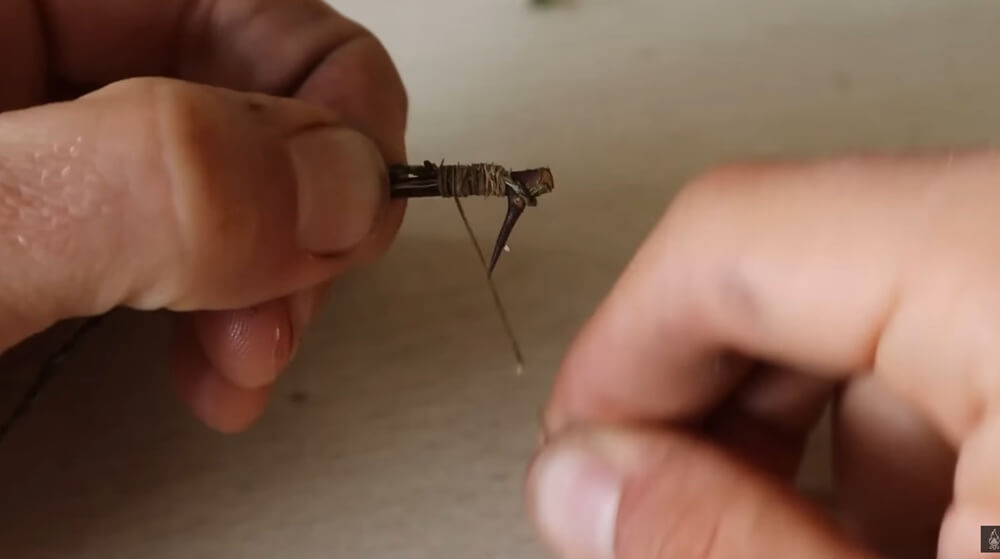
Secure the lashings with pine pitch or beeswax glue for strength.
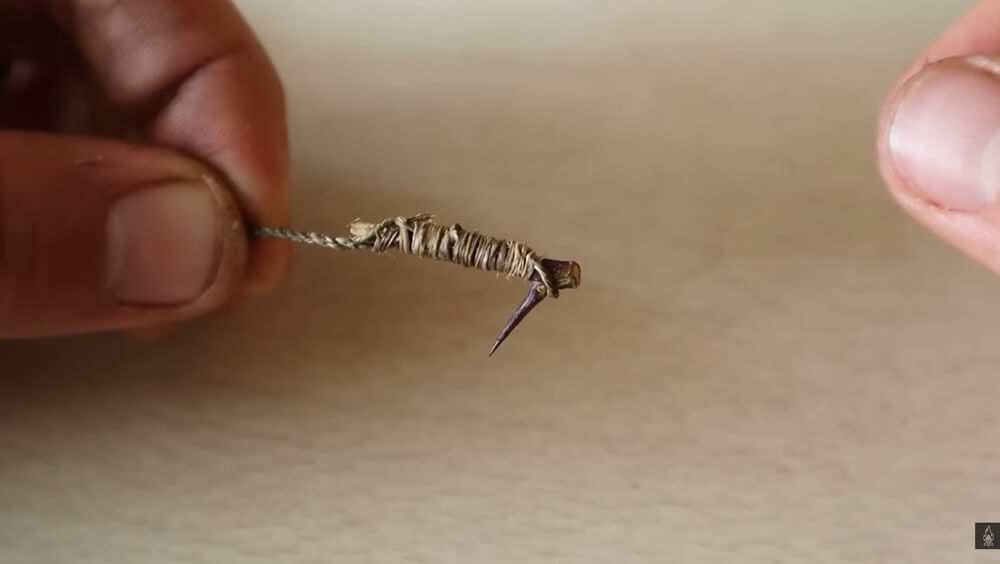
Finally, wrap the leaders around a wooden card.
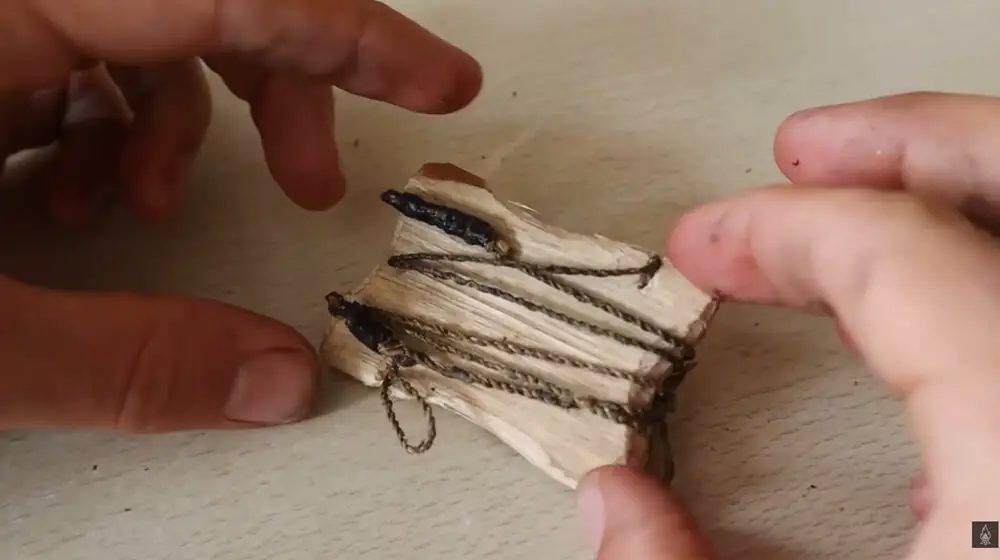
Step 3: Build a Line Winder
To keep your line neat and prevent tangles, make a simple line winder from basic sticks.
Find a flat piece of wood and drill two holes in it, spaced a few inches apart.
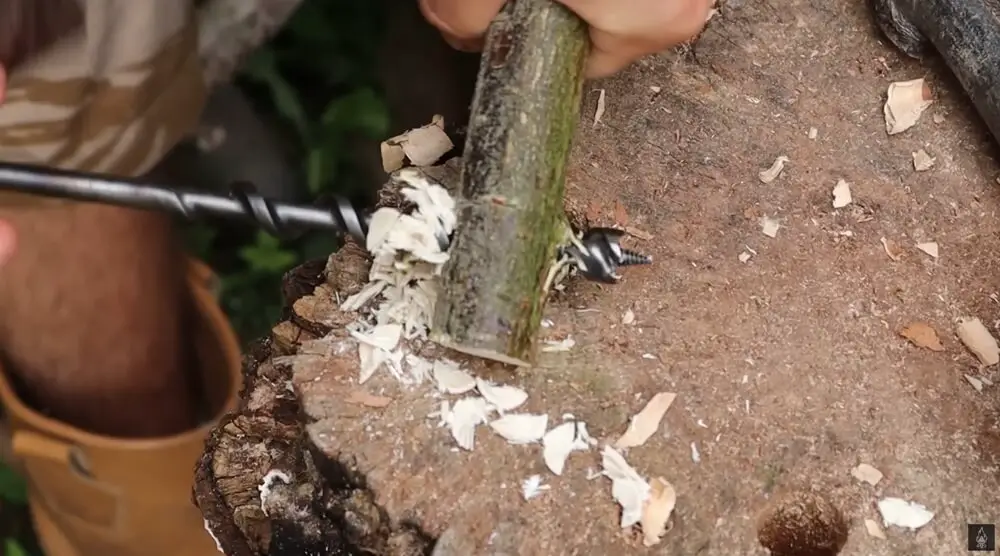
Split the board in half so you have two arms for the winder.
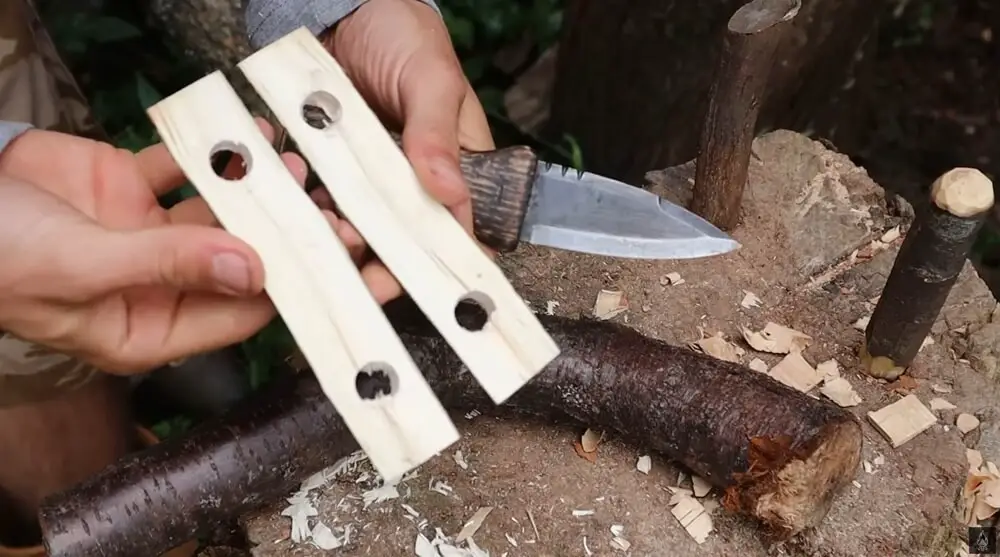
Make two crossbars from smaller straight sticks and shave them until they fit snugly into the holes you drilled.
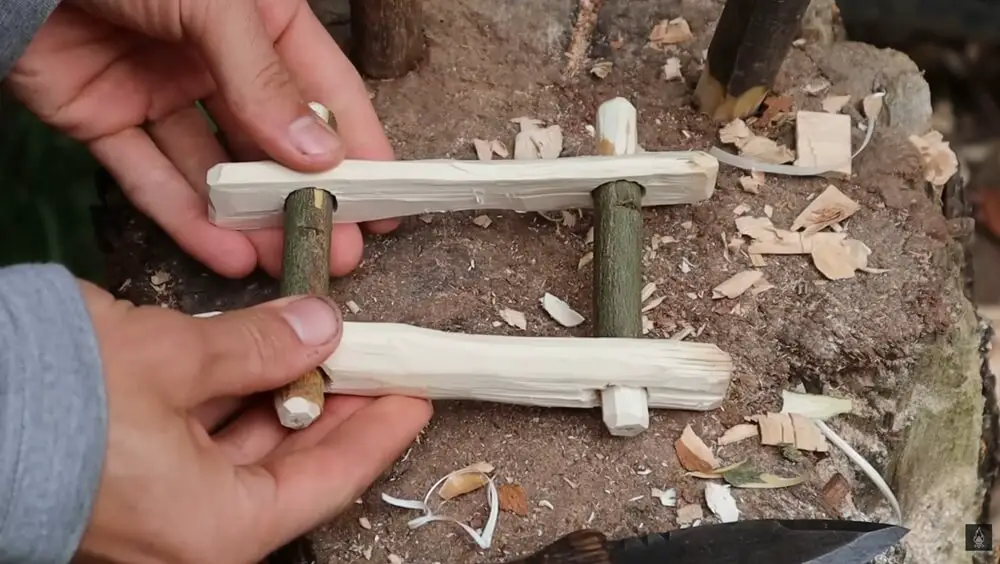
Secure the crossbars by splitting their ends slightly and driving in small wooden wedges. This forces the ends to expand and lock into the holes tightly.
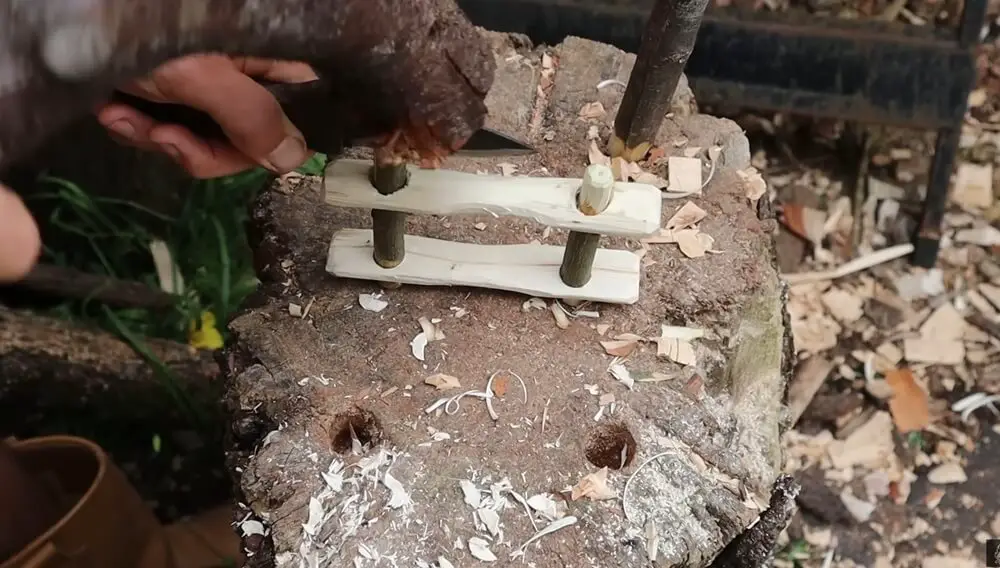
Trim any excess wood so it’s compact and easier to carry. Now you’ve got a primitive but fully functional way to store your main line.
Step 4: Crafting Your Floats (Strike Indicators)
Floats help you detect bites in the water and keep your bait suspended. You’ll make two kinds using elder and willow:
- Bubble Float: Cut a short section of elder wood (it’s light and full of pith). Seal both ends with beeswax to keep water out and help it float. Attach a loop of nettle cordage so you can tie it to your main line.

- Classic Float: Drill a hole through a chunk of elder and run a thin willow stick through the center for structure. Seal both ends with beeswax again. At one end, lash on a short length of nettle cordage and secure it with pine resin glue.
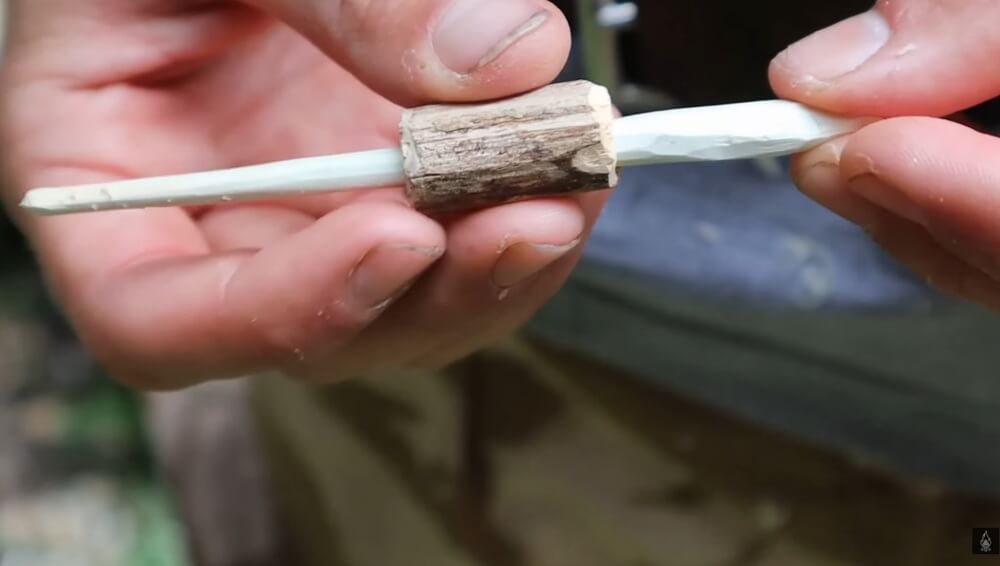
Final Thoughts
In the video, he goes into more detail on how to to make and use this primitive fishing kit. It takes time, especially making the cordage, but that’s part of what makes it so valuable. If you’re into bushcraft, survival, try building one yourself. Even if you don’t catch anything right away, you’ll come away with serious respect for the ancestors who fished this way.
You May Also Like:
The post How to Build a Primitive Fishing Kit appeared first on Homestead Survival Site.
from Homestead Survival Site https://ift.tt/5g7lj9F
No comments:
Post a Comment